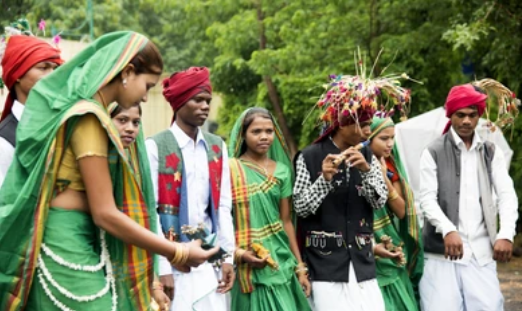Tribe: Gond
The Gond tribe is one of the largest indigenous communities in India, with a population of around four million people spread across several states including Madhya Pradesh, Chhattisgarh, Maharashtra, and Andhra Pradesh. They are a forest dwelling community with a deep connection to nature.

Location
They are primarily found in central India, populating the states of Madhya Pradesh, Chhattisgarh, and Maharashtra. In Madhya Pradesh, the Gonds are concentrated in the districts of Mandla, Dindori, Balaghat, and Seoni. In Chhattisgarh, they are mainly found in the Bastar, Dantewada, and Kanker districts. In Maharashtra, they are found in Gadchiroli, Chandrapur, and Nagpur.

History
The region of Gondwana, now eastern Madhya Pradesh, was first inhabited by the Gonds somewhere between the tenth and thirteenth centuries A.D. Gond dynasties ruled in four kingdoms (Garha-Mandla, Deogarh, Chanda, and Kherla) in central India between the sixteenth and mid-eighteenth centuries. Rani Durgavati is a famous warrior-queen of Garha-Mandla.
The Gond kingdoms were under Mughal rule until the Maratha power swept into Gond regions in the 1740s. They overthrew Gond kings and seized most of their territory.
In 1910, under British rule, the Gonds led the famous Bastar rebellion against the British.

Culture
The Gond community primarily speaks Gondi, a language closely related to Telugu and Kannada. Marathi and Hindi are also widely spoken.
The Gonds follow Hindu customs and traditions. They worship the god Parsa Pen, who is believed to be the tribe’s protector.
The Gonds primarily consume millet, also eating rice and meat during festive occasions.
Pola, a cattle festival, and Nag Panchami, a festival dedicated to worshiping snakes, are some of their most popular celebrations.
The Gonds are renowned for their tribal artwork, which can be found on display in museums. Men usually wear a dhoti, while women wear a sari with a choli.

